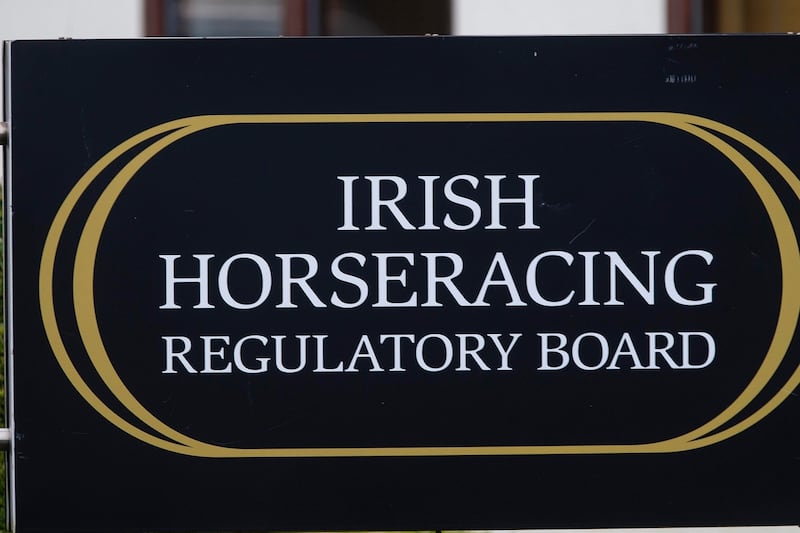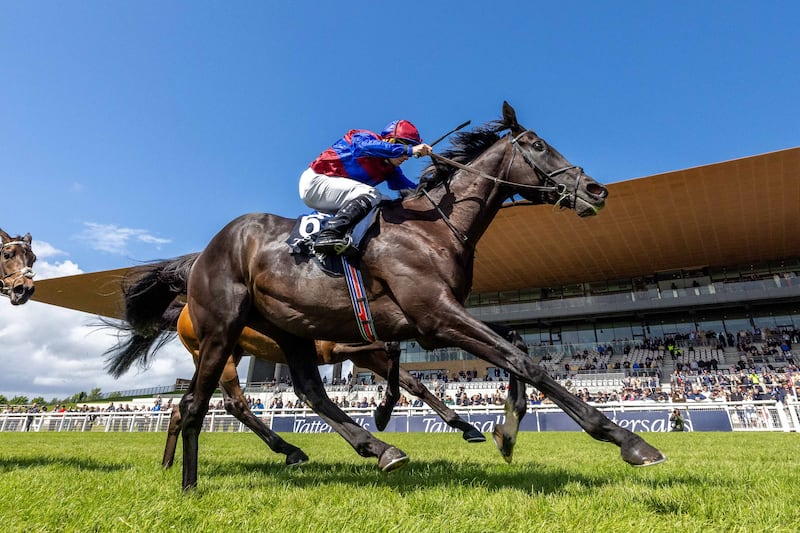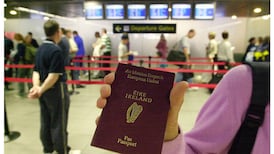The annual weeping and gnashing about the Irish Derby’s slipping prestige is in the rear-view mirror for another year. But the logistical difficulty of finally doing something about it will be underlined on Sunday when the Grand Prix de Paris takes place.
Longchamp’s €600,000 mile-and-a-half Group One for three-year-olds is the highlight of French racing’s Bastille Day holiday programme, wedged in a slot a fortnight after the Irish Derby and just six days before the Irish Oaks.
It is a cluttered and inefficient middle-distance summer schedule for the classic generation. But when it comes to Europe’s pattern race system, it’s also a reminder of the old Leninist line about everything being connected to everything else.
There’s a growing school of thought that the Irish Derby’s woes won’t be cured by a cut to the race distance but by changing its spot. The argument goes that just as the Oaks is run 24 hours before the Derby at Epsom, a similar move at the Curragh could do wonders.
So, simply move the Irish Derby back three weeks, package a bumper classic weekend far enough away from Royal Ascot, and watch top-notch runners and race fans pour into a track desperate for greater spectator appeal.
The problem is that such silver bullets tend to bounce harmlessly off knotty political reality.
Such a shift might be workable if this were just about Ireland. But it’s not hard to see French representatives on the European Pattern Committee going “hold your chevaux, Paddy – the Grand Prix de Paris is important too”.
A blinkered Irish suggestion might be to simply switch the two races, to which the inevitable reply would be, “pourquoi?” After all, the Grand Prix de Saint-Cloud is on the same day as the Irish Derby already and makes sense timing-wise for the King George later this month. On top of which, the Germans will fight the profile fight for their Deutsches Derby.

All of it underscores how Europe’s pattern is an intricate weave of competing national interests that ultimately must hang together or else unravel.
It doesn’t mean stitches can’t get dropped. It’s 20 years since the Prix du Jockey Club was cut to 10 furlongs. In turn, the Grand Prix de Paris, which had been run at almost two miles in the 1970s before being cut to 10 furlongs a decade later, was upped to a mile-and-a-half.
It’s not just from a French perspective that made sense, even if this weekend’s renewal looks like a tepid contest. However, Irish arguments about a later date helping our biggest classic are likely to come up against a Gallic reminder about how important a top feature for the Bastille Day holiday programme is.
It’s not like Ireland hasn’t worked the system to its benefit. The Irish Champions Weekend slot in September was slapped unceremoniously on top of the English St Leger. Resentment at British Champions Day having to hang way out in October burbles away too.
All of it means that although the concept of an Oaks-Derby weekend at the Curragh in July has got some public traction, privately it is regarded as a long shot to ever happen. Even if pulling it off didn’t mean stretching things to breaking point, the basic premise is skewed.
It presumes that cramming the best quality races and the top horses into a festival scenario will be irresistible to race fans in Ireland. But that concept has already been tried and a decade’s worth of evidence from Irish Champions Weekend has thrown up a pretty definitive verdict that it isn’t.
It doesn’t get any better than the two days in September when half a dozen Group One races are backed up by other big pattern prizes and hugely valuable handicaps at Leopardstown and the Curragh.
Just 18,780 turned up for those two days last year. That’s 23 per cent lower than when the first Irish Champions Weekend was run in 2014. At this point, it’s hard to argue against Irish flat racing’s shop window event having found its level in terms of popular appeal. Dreams of both venues being crammed to bursting have been established as little more than wishful thinking.
Acknowledging that doesn’t mean giving up on trying to lure more numbers to go flat racing in this country. But neither does an apparently concentrated attempt by Irish racing’s great and good to bang on about greater positivity as some wonder cure serve any real purpose.
As with other significant dates in Irish racing, it is a sense of occasion that appears to lure people through the gates rather than the quality of action on the track.
All the kerfuffle about how unattractive an Irish Derby card crammed with handicaps to help World Pool betting turnover supposedly would be didn’t prevent an 11,200 attendance, which was up to par for Ireland’s most valuable race.
Even allowing for the unexpected accounting adjustment that meant that figure was an 8 per cent increase on 2024 – when the racecourse released an 11,418 attendance at the time – it tallies with a sense of an event having found its level no matter what the actual race schedule.
In such circumstances, pulling apart Europe’s intricate pattern looks a non-runner.
Something for the Weekend
Charlie Appleby runs two for Godolphin in a valuable mile handicap at Newmarket tomorrow, but the ownership’s third hope, Fifth Column (3.25), looks a better option. He was on the “wrong” side in Royal Ascot’s Britannia but was first home in his group. He has first-time cheekpieces, and Ryan Moore on his back is no negative.
Angelight (2.42) has first-time blinkers in a maiden at Limerick and back to seven furlongs on quick going, Joseph O’Brien’s filly can bounce back from a Gowran defeat last time.


















